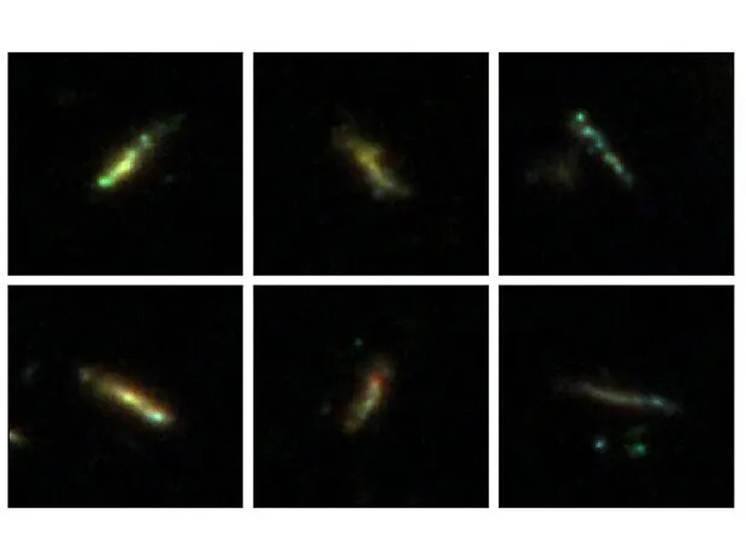Newborn galaxies showed their strange shape
Galaxies in their infancy, photographed by the James Webb Space Telescope, look strange. According to new research, their elongated appearance suggests a three-dimensional structure similar to that of a banana.

For a long time, many astrophysicists assumed that newborn galaxies will look like balls and spider-like disks familiar from the modern Universe.
But according to an analysis of new images from the James Webb Space Telescope, the newborn galaxies were shaped like bananas. This preliminary conclusion was made by a team of astronomers who re-examined images of about 4 thousand newborn galaxies observed by Webb.
“This is both a surprising and unexpected result, although the Hubble telescope already had hints of this,” — said Columbia University researcher Viraj Pandya.
The results may also provide insight into the mysterious nature of dark matter, an unknown and invisible form of matter that astronomers say makes up the majority of the universe and outweighs atomic matter by a ratio of 5 to 1. This unknown something consumes galaxies and provides the gravitational breeding grounds in which new systems.
The finding builds on earlier Hubble observations that the earliest galaxies were shaped like pickles, according to University of California astronomer Joel Primack.
Scientist Alan Dressler remains somewhat skeptical about this result, given how difficult it is to make such measurements, especially for galaxies that are far away, small and not very bright.
There are more than one within the visible universe, scientists estimate. , two trillion, and each of them contains up to a trillion stars. But the visible universe — this is only a small part of what is outside. Most of the matter in space appears to be in the form of dark matter.
Recall that the Webb telescope was designed to study the emerging and mysterious epoch of the Big Bang. With a giant mirror and infrared sensors, it can see the most distant and therefore the earliest galaxies.
«They invariably look very linear, — Pandya noted, — and in some galaxies numerous bright clusters are visible, arranged like pearls in a necklace.
Such oblong galaxies are rare today, but they make up up to 80 percent of the galaxies in the CEERS sample, which dates back to about 500 million years after the Big Bang and was discovered by the telescope in July 2022.
«Their masses are such that they could would be the progenitors of galaxies similar to the Milky Way, — Pandya explained, — implying that our own galaxy may have gone through a similar surfboard morphological phase in the past.
In the modern Universe, galaxies appear to come in two basic shapes: featureless, round clouds called ellipticals, and flat, spider-like disks like our native Milky Way.
In early research, astrophysicist Jeremy Ostriker turned his attention to the fuzzy dark matter. In 1973, he and his colleague James Peebles pointed to the important role of dark matter in stabilizing galaxies.
He and his team noted that fuzzy dark matter would leave its mark on the sizes and shapes of young galaxies, because it does not have restrictions. However, modern telescopes are not nearly sensitive enough to observe such “babies,” so it is clear to scientists that a new generation of even more powerful instruments may be required to complete the work.
When Dr. Ostriker learned of the results of Dr. Pandya, he noticed that the prospects for fuzzy dark matter were looking better and better. “Keep up the good work,” — he commented to The New York Times.























































Свежие комментарии